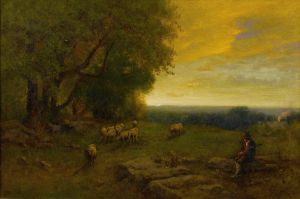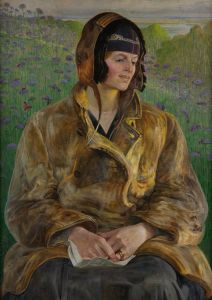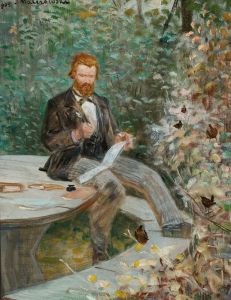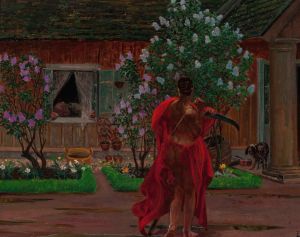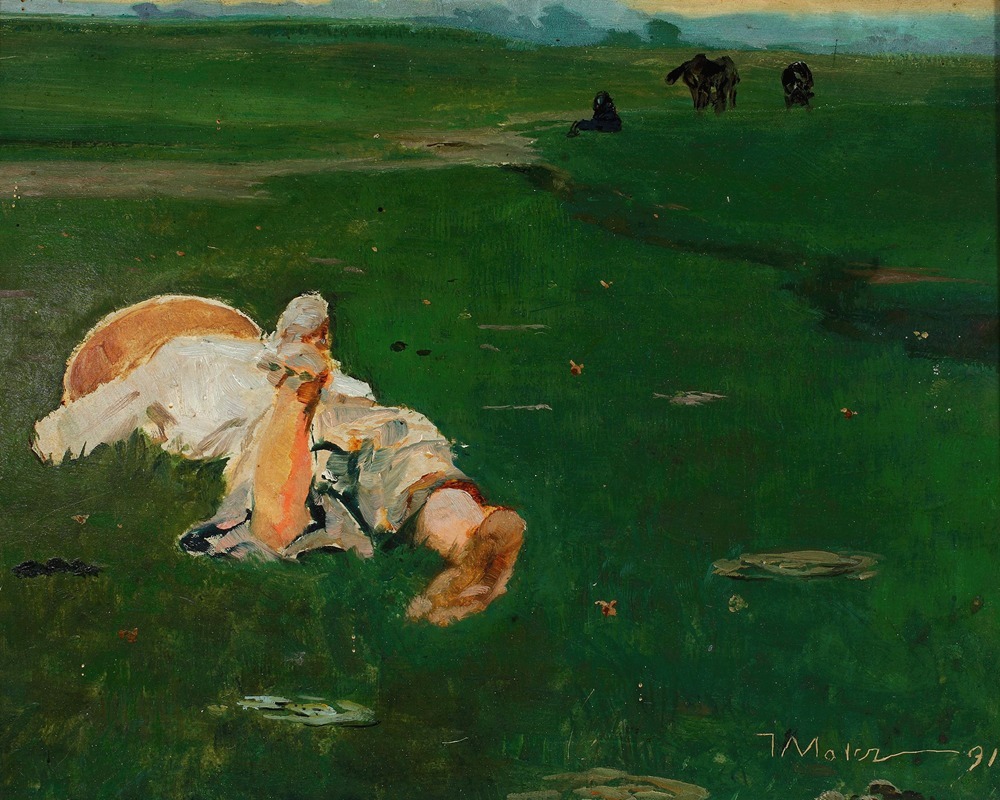
Shepherd girl in a meadow
A hand-painted replica of Jacek Malczewski’s masterpiece Shepherd girl in a meadow, meticulously crafted by professional artists to capture the true essence of the original. Each piece is created with museum-quality canvas and rare mineral pigments, carefully painted by experienced artists with delicate brushstrokes and rich, layered colors to perfectly recreate the texture of the original artwork. Unlike machine-printed reproductions, this hand-painted version brings the painting to life, infused with the artist’s emotions and skill in every stroke. Whether for personal collection or home decoration, it instantly elevates the artistic atmosphere of any space.
Jacek Malczewski, a prominent Polish painter associated with the Symbolist movement, created the painting "Shepherd Girl in a Meadow" in the early 20th century. Malczewski is renowned for his unique style that blends realism with symbolic and allegorical elements, often reflecting on Polish history, culture, and national identity. His works frequently explore themes of patriotism, mythology, and existential inquiry, making him a central figure in Polish art.
"Shepherd Girl in a Meadow" exemplifies Malczewski's ability to merge the real with the symbolic. The painting portrays a young shepherd girl standing in a lush meadow, surrounded by the natural beauty of the landscape. The meadow is depicted with vibrant colors and meticulous attention to detail, characteristic of Malczewski's style. The girl's attire is simple, reflecting her pastoral life, and she is often depicted with a contemplative or serene expression, suggesting a deeper narrative or emotional state.
Malczewski's use of symbolism is evident in the painting. The meadow, a recurring motif in his work, can be interpreted as a symbol of the Polish countryside, representing both the beauty and the struggles of rural life. The shepherd girl herself may symbolize innocence, purity, or the connection between humans and nature. Her presence in the meadow could also be seen as a metaphor for the Polish people's relationship with their land, especially during a time when Poland was partitioned and under foreign rule.
The painting reflects Malczewski's broader artistic goals of exploring Polish identity and the human condition. By focusing on a simple, everyday scene, he elevates the subject matter to a level of universal significance. The shepherd girl, while rooted in a specific cultural and historical context, becomes a timeless figure, embodying themes of resilience, hope, and continuity.
Malczewski's technique in "Shepherd Girl in a Meadow" showcases his mastery of color and composition. The use of light and shadow creates a dynamic interplay that adds depth and dimension to the scene. The vibrant greens of the meadow contrast with the softer tones of the girl's clothing, drawing the viewer's attention to her figure. This careful balance of elements highlights Malczewski's skill in creating visually compelling and thematically rich works.
Throughout his career, Malczewski remained committed to exploring the complexities of Polish identity and the human experience. "Shepherd Girl in a Meadow" is a testament to his ability to convey profound ideas through seemingly simple imagery. The painting continues to be appreciated for its artistic merit and its reflection of the cultural and historical context of early 20th-century Poland.
In summary, "Shepherd Girl in a Meadow" by Jacek Malczewski is a significant work that captures the essence of Polish Symbolism. Through its depiction of a pastoral scene, the painting invites viewers to contemplate themes of identity, nature, and the enduring spirit of the Polish people. Malczewski's legacy as a painter lies in his ability to infuse his works with both national significance and universal appeal, making him a pivotal figure in the history of Polish art.










